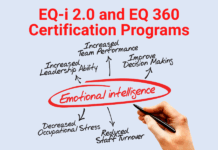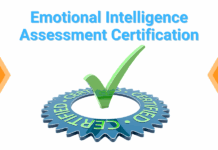
What's one way to experience more meaning in your life?
You made the pro-and-con list and came to a smart decision, and yet you still can’t stop going over and over what could go wrong in your mind. You second-guess, go through different scenarios, but at some point is it too much? Is there a way to quiet our over-thinking and start to enjoy the fruits of our labor?
Shelley Row is a self-described over-thinker. She's the author of four books, and her newest is called Think Less, Live More: Lessons From A Recovering Over-Thinker. I recently interviewed Shelley on the LEADx podcast in the hopes of learning how to keep our minds calm, and enjoy where we are. (The interview below has been lightly edited for space and clarity.)
Kevin Kruse: How do you define over-thinking, and who is an over-thinker?
Shelley Row: Well, I think we all know when we're over-thinking something, and quite a lot of people tell me that they have a tendency to overthink. Not everybody, but quite a lot relate to over-thinking. It's that situation we get into when we just churn and churn and we're spinning, and we go over it again and again in our heads, and it becomes so frustrating, and it frankly is a waste of time, and it's a waste of energy. I use neuroscience in my work, and it's when we're in the logical functioning part of the brain and we're over-using it and shutting out the wisdom that we have in that intuitive part of our brain. When I work with people around over-thinking, it's about how to recognize when we're doing it, and then how to kind of tune in to the feeling part of the brain and begin to give it more voice and combine it with what we're thinking.
Kruse: You used the phrase, “honor our feelings.” How do we begin to do that?
Row: First of all, we have to recognize when we're over-thinking it, and most people can. It's when we're saying to ourselves, “This is just taking way too much time. We've been over this again and again and again.” In those moments, that's when it's time to recognize it and then take a step back.
What I work with people around is to notice the nagging feeling that's inside and to give it a name. I think it's interesting that we've been taught in our society to honor thinking so much that when we get that little nagging feeling inside that holds us back from making a decision, we tend to just shove it away because we think we're not supposed to be feeling. There's no place for feelings at work. That's what I was taught, right?
We have to relearn how to recognize the nagging feeling and then to name it. What I say is notice the nagging feeling, give it a name, and it might sound something like this: “Why am I making this so hard?” You go, “Wow, I'm just uncomfortable,” and that's the name. “I'm uncomfortable about how this decision is going to be perceived by my colleagues.” Or, “I'm afraid that my boss isn't going to support this new direction.” You hear the naming of the feeling. “I'm uncomfortable. I'm afraid. I'm worried.” All of that is naming the nagging feeling, and when we can name it, it takes it from the subconscious into the conscious where we can begin to skillfully unravel it, understand it, and either use the wisdom it brings or set it aside because it's actually not helpful.
Kruse: Let's say a 30-year-old professional is applying to a new job opening in her company. Maybe she's over-thinking it: “Should I apply to this position or not?” How should she balance that thinking/feeling approach?
Row: That's a great example. In fact, I actually lived that example. First of all, I think she would know she was over-thinking it because she'd be at that frustration place. “I have analyzed this. I have made pro and con lists. I have looked at it from every possible angle, and I still can't make a decision, and I'm exhausted. I'm not sleeping.” All of those things, those are all symptoms of over-thinking it.
What I would recommend, and what I didn't do but I wish I had done when I was in that situation, is it's not a bad idea to make a pro and con list. What I tell people is to put your feelings on the pro and con list. Look at all the reasons that you might want to apply, why you're hesitating, and then take a step back and say, “What do I feel about this? Why am I hesitating?” Then this is really important, Kevin. When you ask that question, give yourself a chance to answer it, and then the answer is coming from inside. “I'm worried I'm not up for it. I'm not ready yet.” Or, “I'm afraid that I'll apply and I'm going to put myself out there and I'm going to get turned down and that's going to feel awful.” Ask yourself, “What am I feeling around this? Why am I hesitating?” to name it.
Once you have the name, now we can work with it. A lot of times, it's fear that holds us back or makes us uncomfortable. Once you can understand that that is a fear-based reaction, now you can go, “Well, why am I afraid?” It might be that you have that underlying, I call them “stuck stories.” Let's say it's, “I'm afraid that I'm going to put myself out there and they're not going to pick me. Well, why does that make me afraid?” Maybe you realize that part of your sense of self-worth is by getting that affirmation.
Kruse: I like to challenge our listeners to become 1% better every day. What's something that you would challenge people to try today?
Row: Have them do what we just talked about. When they get unsure about a decision—and it happens to us all the time—when they get to that point, take a step back and notice and name the nagging feeling. “What holds me back? How do I feel about it?” It's basic, and when you notice the nagging feeling and can name it, many times it's as simple as that. You can move past the feeling and make a decision.
—
Kevin Kruse is a New York Times bestselling author, host of the popular LEADx Leadership Podcast, and the CEO/Founder of LEADx.org, which provides free world-class leadership training, professional development and career advice for anyone, anywhere.





